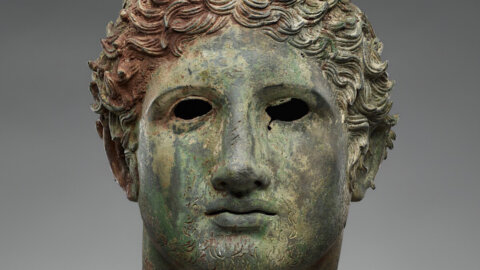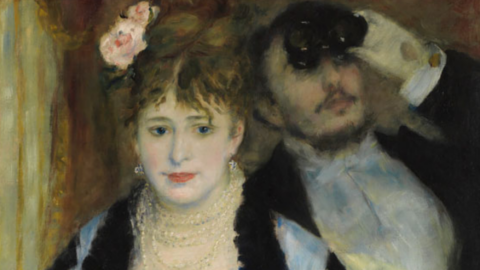In a state of near decline, this is what New York looked like in the late 70s, but it was also time for a new creative scene to emerge. Suddenly a new artistic consciousness appears on the scene: The Pictures Generation, graffiti art, hip hop, post-punk, Jean-Michel Basquiat and Neo-Expressionism. And with this theme, Sotheby's London, next July 26th auctions off several significant works from a private New York collection.
The auction will see some of the most famous names in contemporary art, including Jean-Michel Basquiat, Cecily Brown and Richard Prince, presented alongside Kara Walker, who made only rare appearances at the contemporary art auction night, and Eric Fischl and Ellen Gallagher, for whom this will be a debut evening sale of contemporary art in London.
Issues of race, sexuality, gender and identity politics permeate the collection, starting with the early pieces of Richard Prince, navigating the meteoric rise of Jean-Michel Basquiat, reveling in the eroticism of Cecily Brown and arriving at the urgent racial discourses of Ellen Gallagher and kara walker; 10 works are presented at auction for the first time.
In addition, 13 other works will be featured, including an early drawing by Damien Hirst and works by Laura Owens, Mark Grotjahn and Richard Prince. The combined estimate for all 23 works is £11,9-16,1 million.
Top lots:
oil on linen canvas
153 cm x 190.5 cm.
Note in catalogue
Cecily brown makes no distinction between abstraction and figuration; rather, his work is concerned with translating sensation into painting. Anchored by the human body, his paintings disclose intimate passages of flesh through a constellation of sensual brushstrokes. Together these gestural marks and painted buttocks pose a recapitulation of the canonical tradition of the painted nude. Created in 1999, The Skin of Our Teeth it is a feast of meat that recalls the abundance of Ingres' Turkish bath, the provocation of Picasso Demoiselles, the expressive corporality of Willem de Kooning's women and the carnality of Francis Bacon's contorted bodies. Indeed, Brown is nothing if he is not acutely aware of his painterly ancestors; yet, his works encompass more than mere art historical allusion. Drawn from literature, film, music, magazine and photographic sources, Brown paints a resolutely contemporary bodily experience.
Entitled The Skin of Our Teeth – a phrase that evokes an escape from disaster – this painting possibly refers to Thomas Wilder's work of the same name, which won the Pulitzer Prize for the drama in 1943. Across three acts the play constitutes an allegory for the plight of mankind; though set in modern times, the characters draw inspiration from classical and mythological archetypes, while the show's disastrous narrative underscores its central conceit: humanity's unrelenting ability to survive – by the skin of our teeth. Brown has often bestowed literary titles on his paintings – A Lady with the Little Dog by Anton Checkhov and Desertion by Circus Animals by WB Yeats are two examples of literary works whose titles were affixed by Brown to paintings created in 2009-10 and 2013 respectively. Furthermore, alongside the literary world, pop culture references also play an important role for Brown; for example, in 2013 she embarked on an entire series based on the famous photograph of nude women that graces the cover of Jimi Hendrix's classic album, Electric Ladyland (1968).
Executed in delightful pinks, warm reds, fleshy hues and accented with yellow and black stripes, the current work is among the most body-bodied of Brown's oeuvre; yet, efforts are made to locate the explicit anatomical inclusions that insidiously punctuate his works on canvas. Instead, the observer's gaze opens up between the voids and scatological leaps that vaguely outline what can be a buttock, a leg or a breast; every part of limb or body writhes in concert within the crowded mass of Brown's undeniably orgiastic landscape.
Sexuality has been central to Brown's work from the beginning.
His first show with Gagosian Gallery in 1999 – the same year the work was painted – was called Skin Game and showed works characterized by their overtly sexual nature. As Brown explained: “I think I was doing a lot of sexual paintings… what I wanted – in a way that I think is too literal now – was for the paint to embody the same sensations that bodies would have. Oil paint very easily suggests bodily fluids and flesh… I have always wanted to have many different ways of saying something… so you can have a lick of paint that suggests very delicate skin but then I want something very meaty and cloyed next to it to it” (Cecily Brown in conversation with Gaby Wood in: Gaby Wood, “I Like it Cheap and Nasty”, The Guardian, 12 June 2005, online).
Belonging to this same moment, The Skin of Our Teeth moves promiscuously between a manifold field of provocative association and meaning. Indeed, the skin and teeth of the painting's title help to emphasize the carnality of Brown's composition. Skin and teeth, flesh and bone – the substance of animal human existence – are transmitted through a pictorial frenzy in which boundaries are transgressed and the body becomes landscape.





